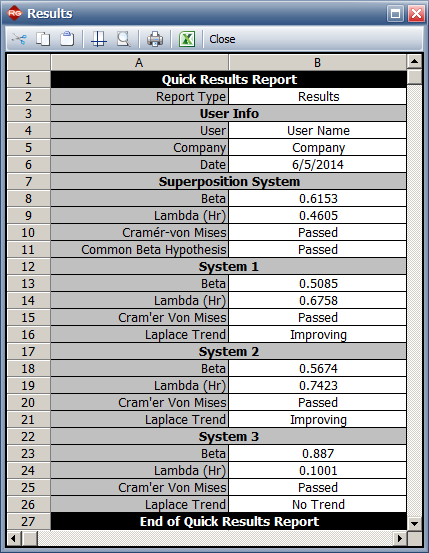Repairable Systems Analysis Reference Example: Difference between revisions
Jump to navigation
Jump to search
Kate Racaza (talk | contribs) No edit summary |
No edit summary |
||
| Line 60: | Line 60: | ||
::<math>\begin{align} | ::<math>\begin{align} | ||
\hat{\beta }=&\frac{\sum_{q=1}^{K}N_{q}}{\sum_{q=1}^{K}\sum_{i=1}^{N_{q}}ln \left(\frac{T}{ | \hat{\beta }=&\frac{\sum_{q=1}^{K}N_{q}}{\sum_{q=1}^{K}\sum_{i=1}^{N_{q}}ln \left(\frac{T}{X_{iq}}\right)}\\ | ||
\\ | \\ | ||
=&0.6153 | =&0.6153 | ||
\end{align}\,\!</math> | \end{align}\,\!</math> | ||
Revision as of 22:19, 11 June 2014
RGA_Reference_Examples_Banner.png
